What is the best way to travel around Hokkaido?
, by Kazu
Sapporo to Daisetsuzan? By bus or by train? This article explains common ways of getting around Hokkaido, and gives insider tips on how to best get to the destinations most popular with adventurous travellers.
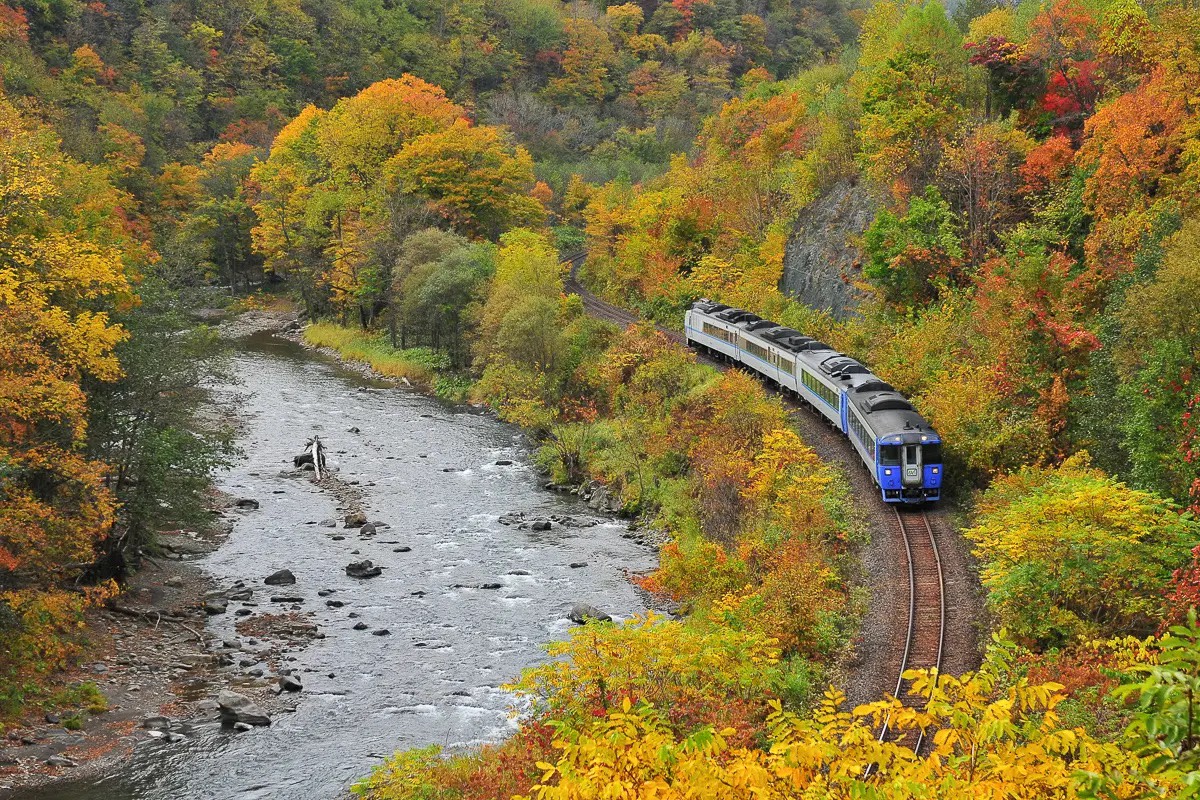
Public transport in Japan is famous around the world, mainly for its timely service, cleanliness and comfort (other than rush hour in Tokyo!).
Up north on the island of Hokkaido, our home and Japan’s largest prefecture, transportation retains the famous Japanese convenience between the major cities. However, visitors coming from overseas to explore Hokkaido’s wild natural landscape will be travelling to the more remote, unpopulated corners of the island, which are a little harder to get to.
So you’ve decided you want to explore the wild side of Hokkaido and have booked your flight to Sapporo’s New Chitose Airport, now you’ll be thinking about how to get around Hokkaido once you arrive.
We hope this helps you get started on your Hokkaido Adventure and look forward to seeing you here soon.
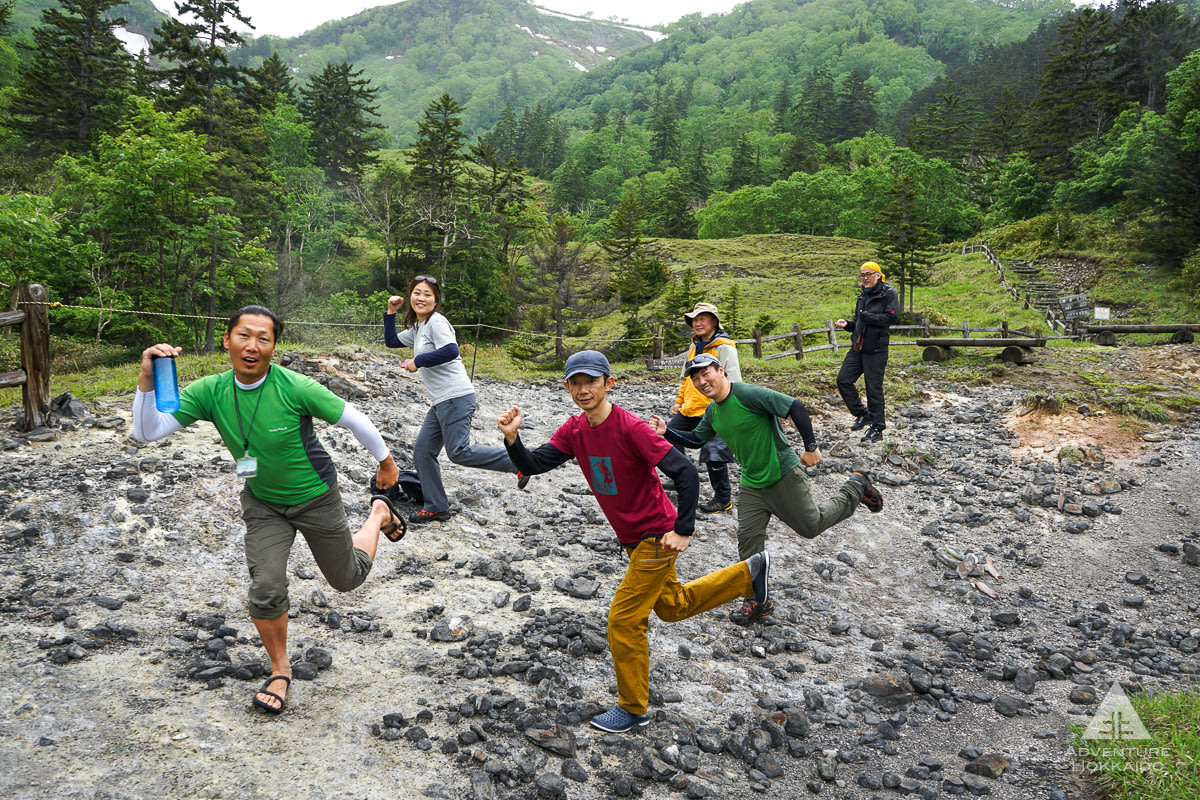
Travelling around Hokkaido by Train
As with all public transport in Hokkaido, the rail network centers around the biggest city, Sapporo. From Sapporo lines head: north to Wakkanai or Abashiri via the city of Asahikawa; south to Hakodate via the Pacific coastline; west to Niseko via the port city of Otaru; and east to Obihiro and Kushiro.
On the local branch lines services are limited so check schedules in advance. For example, Kawayu Onsen, the closest station to Lake Kussharo and Lake Mashu, only has 3 services a day in each direction.
Currently, the famous Bullet Train, or Shinkansen, has only made it as far as Hakodate on the southern tip of Hokkaido. A line connecting Hakodate to Sapporo is under construction and planned to open in 2030.
Otherwise, all services are either “local” trains that stop at every station or “limited express” trains that stop at select stations and require an extra ticket.
The Japan Rail Pass is an option for foreign visitors who plan on using the train to travel a lot, allowing unlimited travel on both local and limited express services. The Hokkaido specific JR Hokkaido pass offers a flexible option, 4 days travel within 10 days, which is perfect for combining adventure days with travel days.
Hokkaido Railway Map
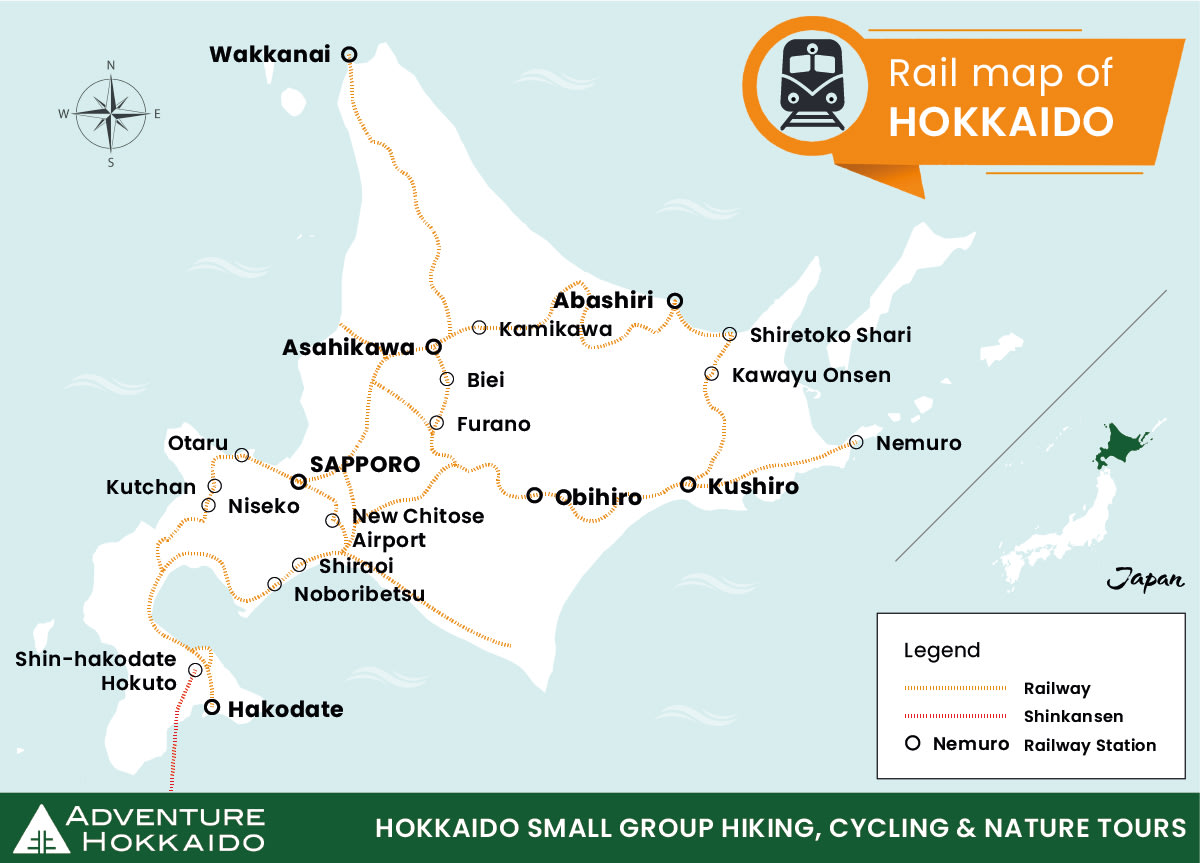
Travelling around Hokkaido by Bus
Bus services in Hokkaido provide both local services within the towns and rural communities as well as intercity services connecting the population hubs. There are also direct bus services between Sapporo and many destinations popular with visitors, which would otherwise involve a few train changes.
The local buses usually just run in between communities, for example between my home town Higashikawa and Asahikawa, and there are few routes to popular trailheads too. Daily services in more rural areas are limited and the stop names will often be written only in Japanese so be sure to note down the Kanji of your destination. Many towns have tourist information offices with foreign language speakers who can help you work out the timetables.
The highway buses are a good budget alternative to the train. While they take longer, they are cheaper and often avoid having to transfer during your journey. The buses have spacious luggage compartments, great for adventurers traveling with big gear, and WiFi is becoming increasingly common onboard. For the hardy, there is even a 7½ hour overnight service that will take you from Sapporo to Shiretoko National Park.
The main intercity bus operators out of Sapporo are Hokkaido Chuo Bus and JR Hokkaido Bus. Dohoku Bus operates routes out of Asahikawa around northern Hokkaido and Donan Bus operates routes running south from Sapporo. However, other than JR Hokkaido Bus, the timetables online are in Japanese only!
Hokkaido Bus Route Map

Travelling around Hokkaido by Air
Given the size of Hokkaido and lack of high-speed bullet train connections, internal flights are the best option for those who want to travel to the Northern and Eastern corners of the island on a tight schedule.
There are 7 internal air routes in Hokkaido, connecting Sapporo with cities in the North, East, or South of the island. While some low-cost carriers provide flights into these other airports, all internal flights are with Japan Airways (JAL) or All Nippon Airways (ANA).
Be aware that there are two airports in Sapporo! Sapporo New Chitose (CTS) is the international airport to the south of the city and it has good public transport connections to the city as well as transfers to international flights. The other airport, Sapporo Okadama (OKD) in the north of the city, has limited public transport connections despite being closer to the city center. Make sure you double-check the airport before booking your flights, transferring between the two takes around 1½ hours!
Hokkaido Air Route Map
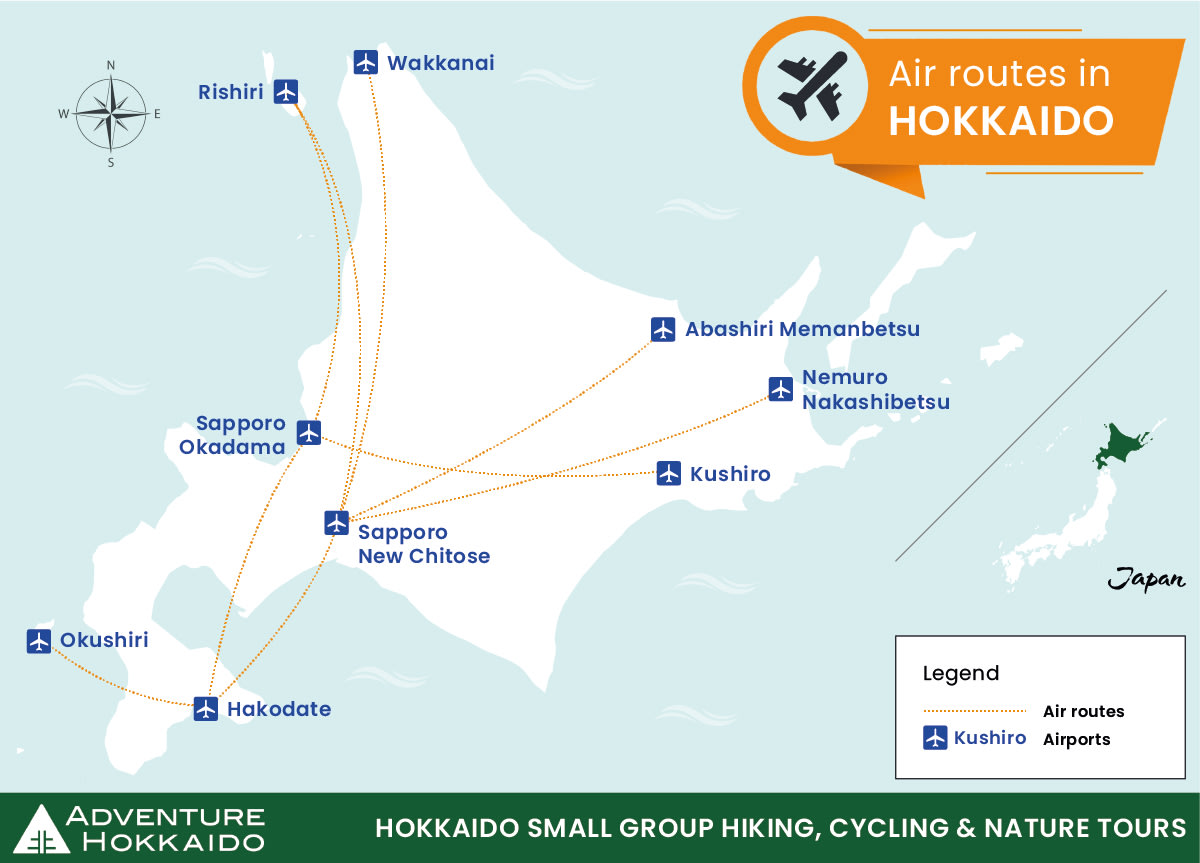
Ferries in Hokkaido
Ferry services connect the offshore islands to mainland Hokkaido. The main Hokkaido ferry company, Heartland Ferries, has ferries that connect Rishiri and Rebun islands off the northern tip of Hokkaido, to Wakkanai. They also run a daily service to Okushiri, off southwestern Hokkaido, from the ports Esashi and Setana.
There is also a ferry, operated by Haboro Enkai, from the town of Haboro to both the Yagishiri and Teuri Islands, known for dense forests and sea bird populations respectively.
The ferry services are significantly cheaper than flying and you can take your own vehicle on Rishiri, Rebun, and Okushiri ferries, making them a good connection for those travelling in their own vehicle. The crossings take between 1 to 2½ hours but the Sea of Japan can be rough at times, especially around Northern Hokkaido, so it could be an unpleasant few hours if you are prone to seasickness!
Getting around Hokkaido by Rental Car
Given the lack of public transport connections to many trailheads and wilderness areas, renting a car will give you more flexibility to explore.
Many major international rental companies, such as Budget and Hertz, as well as Japanese car manufacturers, Toyota for example, have offices at New Chitose airport, Asahikawa airport and other major cities.
Unless you have a Japanese driving license you will need to have an International Driving Permit (IDP) issued under the 1949 Geneva convention on road traffic. Nationals of many countries that don’t fall under the convention, such as Germany, France, and Taiwan, can get Japanese translations of their licenses to use instead of an IDP.
However, there is no bilateral treaty between China and Japan, meaning that Chinese nationals are unable to drive in Japan without a Japanese license.
Flexibility comes at a cost, rental cars in Hokkaido cost between ¥5000 and ¥15000 per day depending on the size of vehicle you need and how long you rent it for. Also factor in fuel and if you are planning on covering long distances you may want to take the toll roads (Kousoku doro) otherwise you will be traveling at 60km/h and stopping at many red lights.
In summer, the main hazards on the roads are surprise deer encounters and greasy hands from eating too much convenience store fried chicken.
However, winter driving in Hokkaido is not for the faint-hearted given some regions can see up to 13m of snowfall! Whiteout conditions and black ice are both common, especially on the mountain roads. Also keep in mind that Google Maps doesn’t know the difference between a freshly plowed road and one with deep tire ruts, treat suggested shortcuts with caution.
Campervans are becoming an increasingly common sight on the roads and in the roadside stations of Hokkaido and there is a growing number of rental companies based around New Chitose Airport.
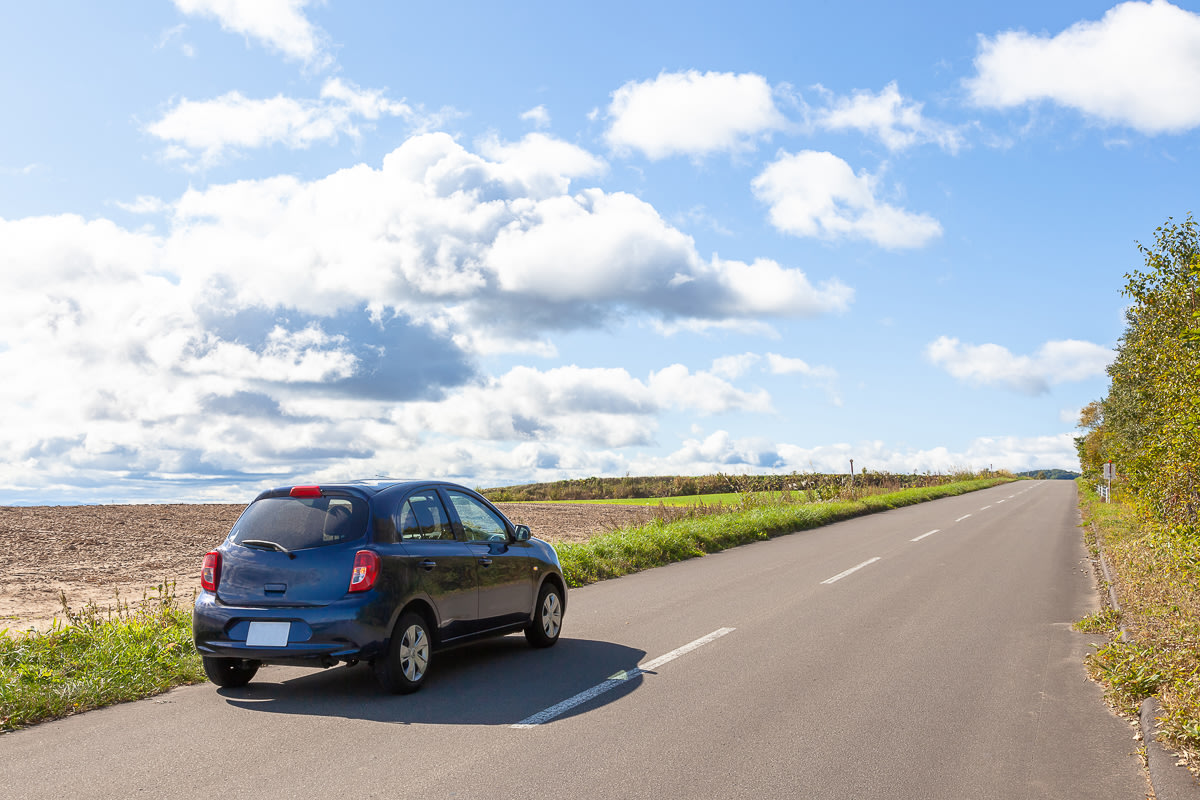
Getting Around Hokkaido by Taxi
If you don’t want to drive but can’t get to your destination in time by public transport, a taxi can be an option in a pinch.
Taxis in Hokkaido are metered either by distance or time and the fare will add up quickly, expect to pay ¥10,000 to ¥20,000 for a trip between Asahikawa and one of the main trailheads.
While you will often find taxis parked outside stations and airports but you will need to arrange a pickup in advance in other locations.
As with catching a taxi in any foreign country, it helps to have the address of your destination written in Japanese. You can hail a taxi when you see one driving past, just keep an eye out for the red or green sign in the windscreen – green means available for hire, red means hire in progress.
Tours in Hokkaido
Many outdoor tours in Hokkaido include transport as part of the package and provide much of the freedom of travelling by car without the stresses of navigating a foreign country or driving on the other side of the road. With a local guide or driver, you will be able to skip the convenience stores and head to great local cafes and restaurants for your rest breaks and with minivans such as the Toyota Hiace common in Japan, you won’t be crammed into the middle seat of a 5 seater car.
A good tour operator will pick you up and drop you off at your accommodation on short tours, or plan the tour to start and finish at a major transport hub. Be sure to check the start and finish points of the tour when you book.
If you are traveling onward after the tour, let the guide know where your next destination is as they will usually be happy to help you plan your onward travel. See more information about the different tours available in Hokkaido here.
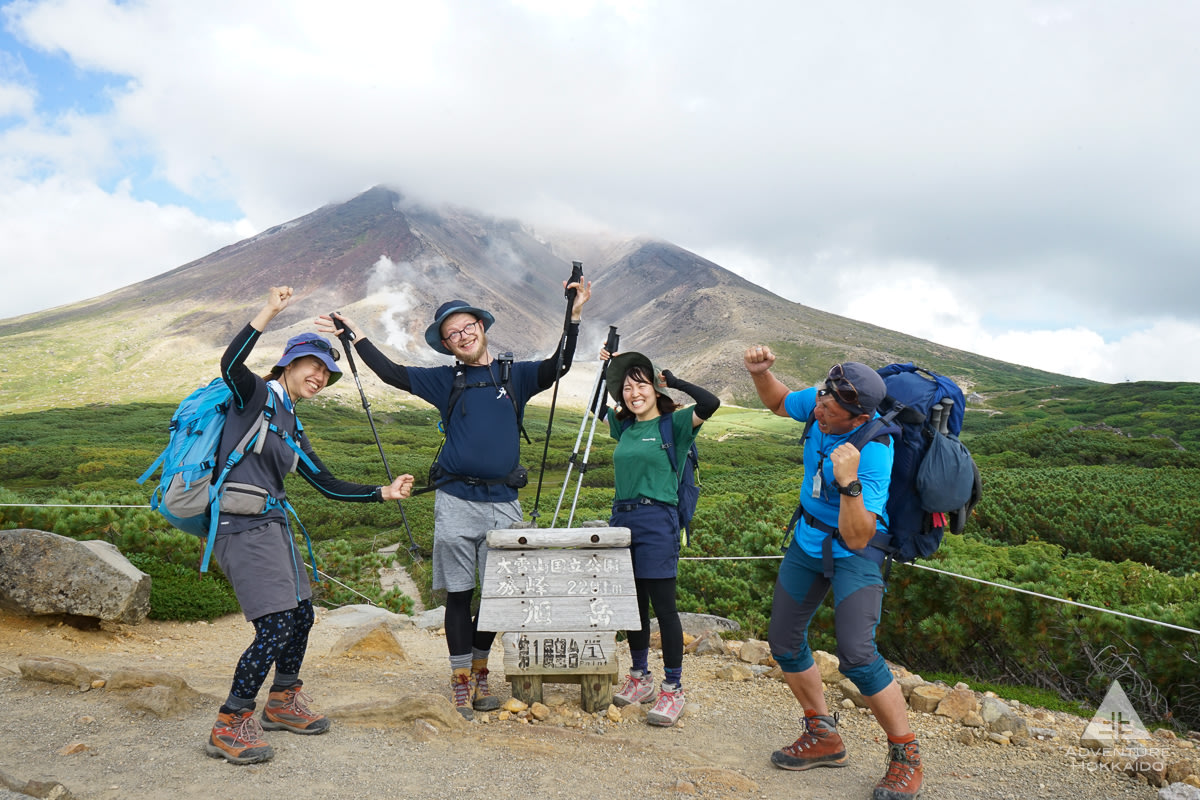
Getting around Hokkaido by Bike
If you have time and energy on your side, a bike is a great way to experience the countryside of Hokkaido.
For hardy adventurers setting off on a long-distance independent ride through the island will be something you’ll never forget, many people will opt for the ease and security of cycling as part of an organized tour like our Around Daisetsuzan 7 day cycling tour.
For those visiting for a shorter time, travel by bike truly shines on shorter rides through the rolling hills and farmland that surrounds most towns. In the summer months when the pavements are clear of snow a bike is also a great way to get around the smaller towns.
Provided you pack your bike correctly you can take it onboard any train for no additional charge. This makes it possible to cover the long distances on the train, saving your legs for the good sections of riding.
If you don’t want to bring your bike all the way to Japan, there are rental services in many towns offering hybrid bikes so you can get out and explore for a day.
If you have your sights set on longer distances there are a couple of rental shops in Sapporo and Asahikawa that rent touring bikes for multi-day trips but you may also want to consider a supported cycling tour.

Motorcycle Touring in Hokkaido
The wide expanses and winding mountain passes in Hokkaido have long been a popular destination for adventurous Japanese motorcyclists in the short summer months. In winter the only people you see on two wheels are the postmen on their scooters sporting tyre chains.
As with bicycle touring, it is possible to rent touring motorbikes in Sapporo but there are only a few shops and even fewer with English speakers.
You will need to bring your driving license, passport, and international driving permit and make sure your driving permit includes motorcycles. Services can be few and far between and some of the mountain roads are challenging to ride even in good weather, so Hokkaido is more suited to experienced riders.
To get really stuck into the motorbike touring culture of Hokkaido, stop off at one of the many rider houses in remote parts of the island. They are usually operated by local riders who provide super basic but very affordable accommodation aimed at aiding other riders exploring the wild corners of Hokkaido.
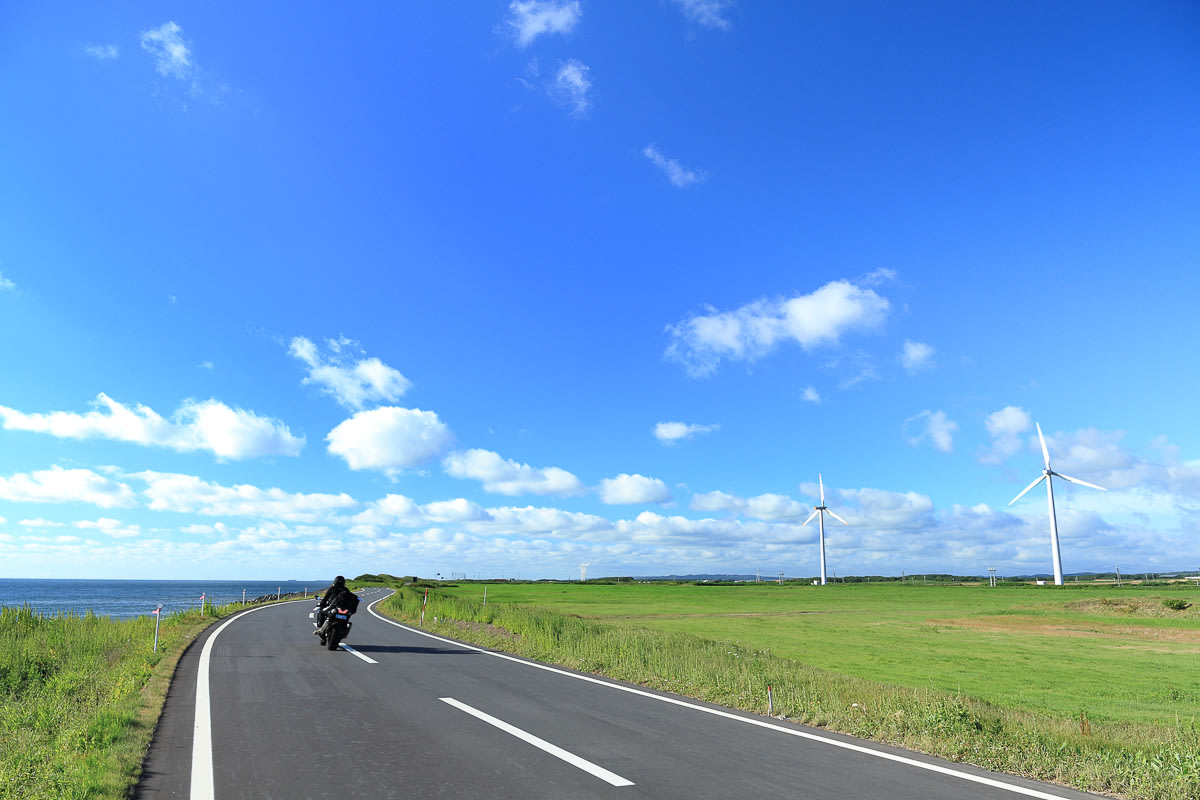
Hitchhiking in Hokkaido
Hitchhiking is a great way to meet locals while traveling.
It is legal to hitchhike in Japan, but it is very uncommon, especially compared to somewhere like New Zealand and given there is not much of a culture of hitchhiking here, Japanese may not understand the thumbs out gesture. Others may be too shy about their English so if you are serious about hitching your way through Hokkaido try writing the name of your destination in Kanji on some paper and hold it up.
No matter how you travel around Hokkaido, the journey is part of the experience
As with travelling anywhere, especially somewhere as large and wild as Hokkaido, getting around is not without challenges but no matter how you travel through Hokkaido, you will be rewarded with some amazing scenery as you go.
The “best” way to travel around Hokkaido depends on your budget, time constraints, and destination.
For those looking to connect with both the locals and the wilderness in Hokkaido, joining a tour allows you to make the most of your time, whilst meeting like minded people along the way and never having to stress about a missed connection or foreign road signs.
See more about our Hokkaido tours here, we offer small group fully guided tours with local English speaking guides. Tours range from one to eleven days and include hiking, cycling, wildlife, cultural and adventure tours.
Ready to find out more?
See our Hokkaido hiking, cycling & nature tours